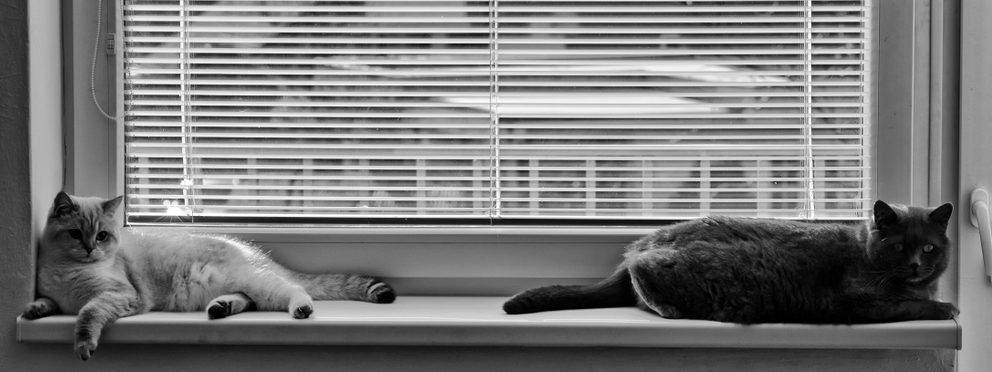There may be nothing on earth cuter than two cats cuddled up in the same cat bed. But while those particular cats may be willing to share a bed, that doesn’t mean they’re okay about sharing everything.
Cats don’t actually share well. The reasons for that have as much to do with territory as they do with stuff.
Territorial Strategies
Cats who live in the same home carve up that space into individual territories. You probably already see that Fluff likes to hang out on the windowsill in the bedroom while Puff prefers the cat perch in the living room.
You might be tempted to say the bedroom is Fluff’s territory and the living room is Puff’s domain. But the borders of Puffistan and Fluffistan are way more convoluted. Fluff may claim the windowsill in the bedroom but not the comfy spot on the pillow, and Puff may control access to the cat perch in the living room but not the armchair. Rather than each cat’s territory being a specific room, they have something more like little islands.
And it gets even more complicated, because territory can be fluid for cats, and its value may change based on time of day and circumstances. For example, my two cats snuggle up next to each other on my pillow during the day. But at night when I’m in bed, the value of that territory changes and suddenly it’s a contested area. Similarly, two cats may be fine together on the kitchen counter, except during mealtimes, when the presence of food makes that a hot spot.
Resource Sharing? That’s a No
These complicated territory arrangements can cause a lot of stress if you have more than one cat. You can address that stress by making sure your cats don’t have to share anything. Each cat needs their own scratching post, elevated perch, hiding spot, litter box, food dish, food-foraging toys, water dish, fuzzy toys, and cozy sleeping spot.
If they’re currently sharing some of those resources, don’t assume they’re sharing happily. More likely they’re sharing out of necessity. The stress that causes might show up in other ways: little spats, hisses, and squabbles; one cat always evicting the other from the sunny perch by the window; or one cat using the scratching post and the other cat using your furniture.
Even if you have two cats and two of everything, if all the resources are in Fluffistan, Puff has to either hang out in a foreign country or cross through enemy territory to get what she needs. So you might see Puff always stepping back when Fluff approaches her food bowl. That’s because they’re both eating in Fluffistan, where Fluff is the emperor. Feed Puff in Puffistan and she’ll feel a lot more comfortable. (Here’s more about the best way to feed cats.) Or you might find that Fluff sometimes has litter box lapses, even though he’s got a litter box in Fluffistan. If he has to cross through Puffistan to get to it, though, Puff may be guarding those borders. This kind of guarding behavior can be subtle, and you may not notice it. But Fluff will—and will pee in your potted plant rather than take a risk.
If you give all your cats all the things they need, in the places where they feel comfortable, they’re much less likely to stress each other out. And please don’t forget that resources include play and cuddle time with you. If the center of the living room is Fluffistan, Puff may never feel comfortable playing there. You might see her step back and watch your play session with Fluff and conclude that Puff just doesn’t like to play. Try taking her into Puffistan, closing the door, and initiating a play session. When she’s on her home turf, she might surprise you.
This article was reviewed/edited by board-certified veterinary behaviorist Dr. Kenneth Martin and/or veterinary technician specialist in behavior Debbie Martin, LVT.








